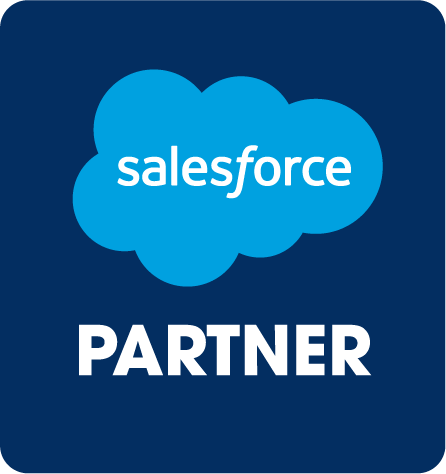 Measuring the progress of your Salesforce project can be difficult. In this article, 24x certified Salesforce Consultant, Chris Gardner, takes us through four key metrics that you can use to measure whether your Salesforce project is on target, or whether you need to crack the whip!
Measuring the progress of your Salesforce project can be difficult. In this article, 24x certified Salesforce Consultant, Chris Gardner, takes us through four key metrics that you can use to measure whether your Salesforce project is on target, or whether you need to crack the whip!
Salesforce projects can be quite lengthy, with enterprise projects typically lasting more than 6 months. With large projects, especially those including multiple work streams, it can be difficult for a business to keep track of how far along they are, and whether things are going to plan.
In this article, we’re going to explore how Salesforce project progress can be measured, and important questions your business should be asking of your partner during the project. There are 4 key areas you need to measure for your Salesforce project.
Measure #1 – Project Timeline
The first area you need to measure is the timeline. From the project kickoff to the scheduled deployment, you have a set number of days and weeks. You want to keep a close eye on the calendar to ensure the project can be deployed on time.
There are two important reasons to watch the timeline. If you have contingencies based on the deployment, such as a scheduled company-wide launch, sales kickoff event, etc., the deployment date is not flexible. Missing that deadline would have a large negative impact.
The second reason is due to resource costs. Salesforce implementation partners bill based on hourly rates per resource. Adding weeks to the timeline adds additional costs due to the resources assigned to the project. This means delays will have a direct financial impact.
Measure #2 – Project Phases
For most Salesforce projects, a true agile development process is not utilized. This is because of the requirement for a defined budget and set of deliverables at the project start. Due to this, many Salesforce implementation partners, like Simplus, use a hybrid methodology. This consists of several project phases, from requirements gathering to deployment.
The key phases of a Salesforce project are:
Analysis and design
This is the requirements gathering stage. This is the most important part of any project. During A&D, your company and your partner establish the project goals, deliverables, timelines, budgets and more.
Alignment in this phase is the item that most determines whether a project will be successful.
A good partner will make sure that the outcome of this phase is a set of user stories and acceptance criteria. This set of documentation is what all future phases will use as the foundation. Whenever possible, ensure your partner works directly with your team to write detailed acceptance criteria.
Development
This is where the configuration, development and build activities happen. Depending on the project complexity, teams involved, and partner, this phase may follow a waterfall or agile methodology.
Consistent demonstrations and check-ins are the key item for this phase. You want to track the progress of build items to ensure the deliverables will meet requirements.
If a partner is using a hybrid methodology, they transition to agile during this phase. User stories are divided into sprints, typically 2 weeks, the end of which features a sprint demo. This demo should be compared to the user stories and signed off at the end of each sprint.
Testing
The testing phase of a successful project includes two parts, quality assurance and user acceptance testing. The partner should be performing internal testing of the code and configuration to guarantee the quality of the delivered items.
For your business, user acceptance testing involves a real time commitment. But it is an extremely important step, so make sure you have appropriately planned for your team’s time. The UAT phase should go through the acceptance criteria that was created during the A&D phase.
Deployment
The deployment phase is the final phase of a project. This is where the final requirements are moved into production and users can begin to use the system. The deployment phase typically divided into pre-deployment training and preparation, deployment, and post-deployment support.
Prior to deployment, it is important to build out the deployment plan. For most companies, a deployment is handled over a weekend to have the least business impact. If training needs to be provided to users, that needs to happen prior to deployment to avoid user adoption issues.
During deployment, both partner and company resources need to work together to ensure a pain-free launch. Both sides need to be available for bug resolution, final fixes and deployment issues.
For a successful project, you want to align the project phases with the project timeline. That way you can keep track of delays. If A&D is supposed to be completed by week 6, and it is trending to end in week 7, you know that may have an overall project impact. Keep a close eye on each project phase, and hold your partner and internal team accountable to the phase schedule.
Measure #3 – Project Burn
The third key measurement for your project is the burn. This is commonly measured either in total project budget, or resource hours. Both of those are correlated, as partners bill for resource hours, but different partners may provide you with a different metric. Whether this is provided as overall budget, phase budget, phase hours, etc., make sure you are able to track the burn rate.
This metric can be difficult to understand, as Salesforce projects typically have a non-linear burn. During A&D, you may be 15% through the timeline and 25% through the budget. While it is important to notice these mismatches, that may actually be to plan. A&D is frequently heavier in project management and architectural oversight. Burn through UAT can be lower since more responsibility moves from the partner to your internal company resources.
So a good Salesforce partner will be able to reconcile the project burn number against their plan. Ask them to provide you with the expected burn vs. actual burn so you can see when things are getting off track.
Measure #4 – Project Risks
The final item to measure is one that separates a good consultancy from a great consultancy. A great consulting firm will provide you with a log of risks, assumptions, issues, and dependencies. This may be the formal RAID log, or the partner’s own proprietary version. No matter the terminology, you want to ensure that your chosen Salesforce partner will provide you with this important project management tool.
You need to consistently log and track blockers, action items and deadlines for partner and your internal company resources, key decision points, and risks to the project timeline and budget. The documentation and discussion of these is an important way to keep teams on track, resolve project issues and move forward to the final goal.
There are complexities in any technology project, and no Salesforce project is without issues. However, documenting items and working together with your partner to resolve problems is the best way to have a successful outcome in the end. This facilitates communication and transparency, which leads to better alignment and cooperation.


Need an expert to step in?
Browse our bank of pre-vetted and qualified Salesforce professionals, ready to step in and save your project!
Tracking Deliverables?
You’ll notice that I did not include project deliverables in my list of metrics. This is for good reason, that isn’t a good indicator of project health. If you are only tracking deliverables, you won’t notice project issues until late in the delivery phase. That could be 70% of the way through the project, which is too late to effectively course correct.
Additionally, deliverables can cause you to lose the forest for the trees. Individual user stories are important, but it can be easy to focus on details and overlook more important project items.
Key Takeaways
The four important measurements for your project are timeline, phases, burn and risks. Each item carries value, but combining all four will give you deep insight into your project’s health.
When you notice an inconsistency (for example 20% through timeline, 10% through phases and 50% through the burn), you can raise this concern with your partner. If you see a high number of project risks, or delays in dependencies, speak with your partner to ensure alignment.
Since the tracking of these measurements will help you have a successful project, you want to gather this information when choosing an implementation partner. Ask them to speak to their delivery methodology and project management tools. You may want to see some samples of their deliverables so you can assess whether they will provide you adequate documentation and project metrics. You can often qualify and disqualify potential partners on this information alone.
Whether you have a small Salesforce project, or a multi-phase enterprise implementation, you need to keep a close eye on these metrics. The more proactive you are, the sooner you can address issues.
The earlier problems are identified, the less overall impact they will have. This process will help avoid scope creep, misalignment, change orders, and a poor project experience.
About the author
Chris Gardner is a 24x certified Salesforce consultant at the Salesforce partner Simplus, as well as editor at the blog Salesforce Chris. He is passionate about solving problems using Salesforce, as well as developing the talent of new professionals in the Salesforce ecosystem.



